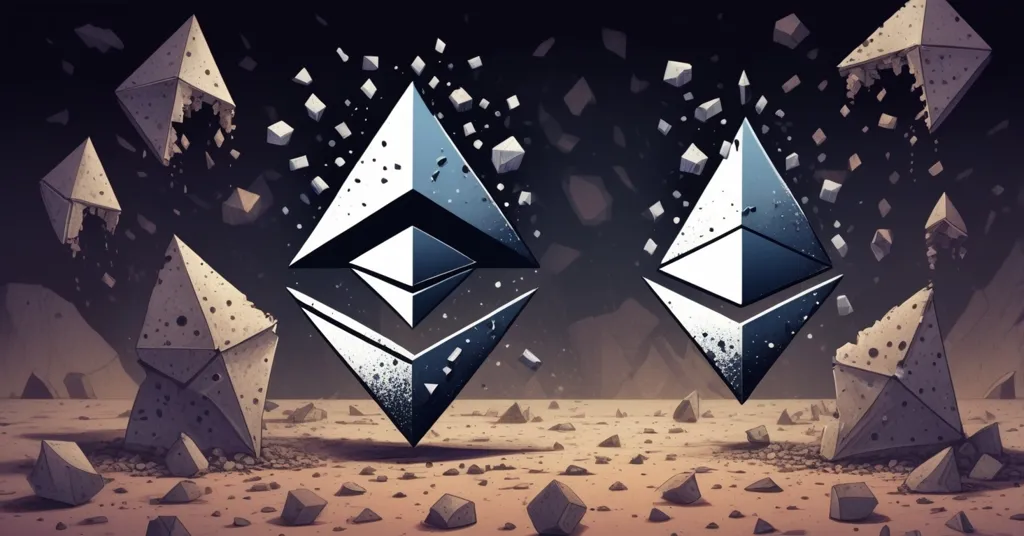Charles Hoskinson Predicts Ethereum’s Demise in 10-15 Years, Cites Flaws

Ethereum’s Future in Question: Cardano’s Hoskinson Predicts Obsolescence
Charles Hoskinson, the visionary behind Cardano, has cast a shadow over Ethereum’s future, boldly predicting its potential decline within the next 10 to 15 years. Drawing a parallel between Ethereum and the once-dominant BlackBerry, Hoskinson’s critique cuts deep into Ethereum’s operational framework, highlighting what he sees as critical design flaws.
- Hoskinson foresees Ethereum’s end within 10-15 years.
- Ethereum’s fate compared to BlackBerry’s.
- Criticisms target Ethereum’s core architecture and governance.
- Cardano, Solana, and Sui positioned as Ethereum’s rivals.
During a recent AMA session, Hoskinson didn’t hold back, stating,
“So, I don’t think Ethereum will survive, you know, more than 10 years to 15 years.”
His skepticism centers around Ethereum’s consensus mechanism, protocol structure, and governance—elements he believes are fundamentally flawed. He dismissed Ethereum’s Proof-of-Stake (PoS) transition as inadequate for long-term scaling and decentralization. For those new to the crypto world, Proof-of-Stake is a method where validators are chosen to create new blocks based on the number of coins they hold and are willing to “stake” as collateral. Additionally, he labeled Ethereum’s layer-2 solutions as “parasitic,” a term that refers to additional protocols built on top of the Ethereum blockchain to help it process transactions more efficiently and reduce fees.
Hoskinson’s proposed solution for Ethereum involves shifting to a delegated proof of stake system and adopting on-chain governance. He warns of a potential “hostile separation” between Ethereum’s mainnet and its layer-2 solutions, suggesting these auxiliary networks might eventually outgrow and abandon their host.
The crypto market has felt the tremors of such critiques, with Cardano trading at $0.6839, down 1.60% in 24 hours, and Ethereum at $1,742, experiencing a 3% drop in the same period. This bearish pressure underscores the market’s volatility, possibly intensified by high-profile criticisms like Hoskinson’s.
Not content with just critiquing Ethereum, Hoskinson also named Cardano, Solana, and Sui as potential usurpers of Ethereum’s throne. He lauded Cardano for its complete roadmap, decentralized governance, and superior sidechain integration, suggesting these features give Cardano a competitive edge. Solana’s recent innovations, like its partnership with AT&T through the Helium project, and Sui’s growing network activity, including significant decentralized exchange volume and stablecoin usage, add to the competitive pressure on Ethereum.
The crypto community has taken note of Hoskinson’s bold statements, with lawyer John E. Deaton commenting,
“Fascinating to listen to an Ethereum co-founder opine on whether Ether can even survive.”
Deaton’s remark highlights the ongoing debates and competition within the blockchain sector, where Ethereum’s future remains a hot topic.
Hoskinson’s prediction serves as both a warning and a wake-up call for Ethereum and its community. Ethereum’s response to these criticisms could involve further developments like Ethereum 2.0, which aims to improve scalability and security. Yet, the path forward remains uncertain, and the blockchain race continues to heat up with high stakes.
While Hoskinson’s critique may seem harsh, it’s essential to consider the broader implications for the crypto market. Increased competition among blockchain platforms could drive innovation, ultimately benefiting the entire ecosystem. As Ethereum navigates these challenges, the industry watches closely, poised for the next wave of technological advancements.
Key Takeaways and Questions
- What is Charles Hoskinson’s prediction for Ethereum’s future?
Hoskinson predicts that Ethereum may not survive beyond the next 10 to 15 years due to its flawed design features.
- How does Hoskinson compare Ethereum to BlackBerry?
He likens Ethereum to BlackBerry, suggesting that like BlackBerry, Ethereum could become obsolete due to its inability to adapt to new technological trends.
- What specific criticisms does Hoskinson have about Ethereum’s design?
Hoskinson criticizes Ethereum’s consensus model, protocol structure, governance, Proof-of-Stake mechanism, and layer-2 solutions, calling the latter “parasitic.”
- What improvements does Hoskinson suggest for Ethereum?
He suggests Ethereum shift to delegated proof of stake and on-chain governance, and reduce its dependency on layer-2 solutions.
- Which blockchain platforms does Hoskinson see as potential competitors to Ethereum?
Cardano, Solana, and Sui are mentioned as potential competitors that could capture Ethereum’s market share.
- What is the current market performance of Cardano and Ethereum?
Cardano is trading at $0.6839, down 1.60% in the last 24 hours, while Ethereum is at $1,742, down 3% in the last 24 hours, both showing bearish pressure.
- How might Ethereum respond to these criticisms?
Ethereum is working on upgrades like Ethereum 2.0 to improve scalability and security, which could address some of Hoskinson’s concerns.
- What are the broader implications for the crypto market?
Increased competition and innovation among blockchain platforms could benefit the entire ecosystem, driving forward the adoption and development of decentralized technologies.



